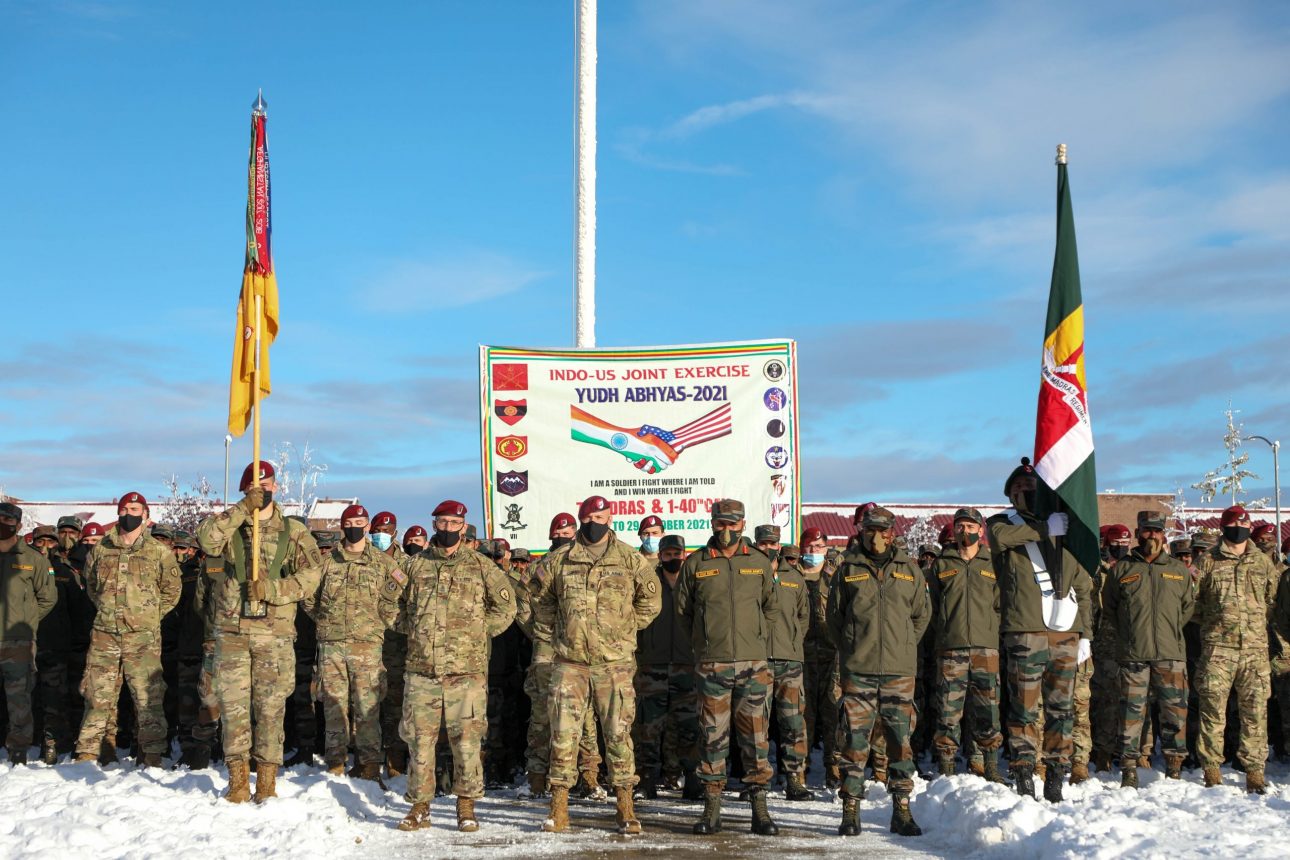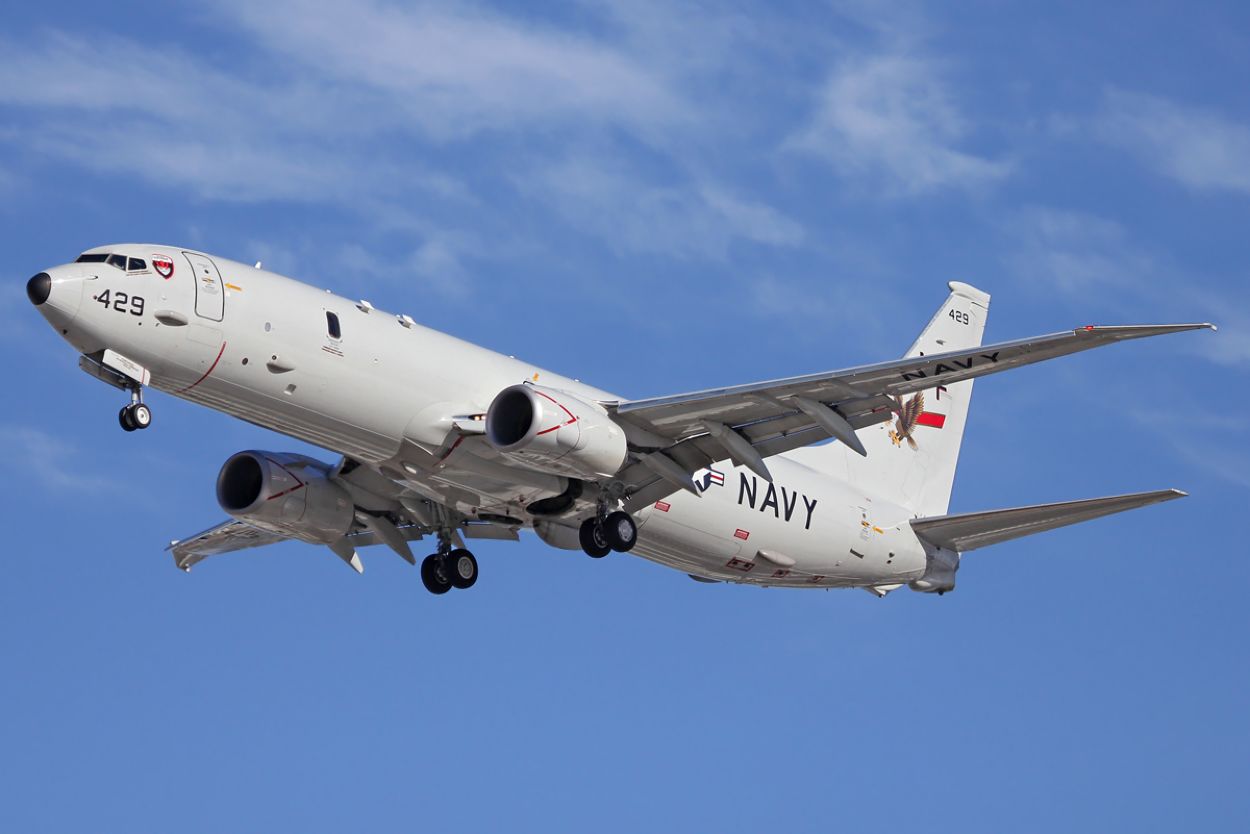The increasing number of military exercises that the United States is conducting with its allies and partners, including India, seems to be a key indicator of their shared vision for an Indo-Pacific region that is “free and open, connected, prosperous, secure, and resilient.”
MiG-31 & Vympel R-37M – A Deadly Combo That Ukraine’s F-16 Fighters Can Challenge But Not Defeat
It also implies their shared commitment to reinforce the region’s capacity and resilience to address the challenges emanating from the perceived aggressive behavior of China.
If Gen. Charles A. Flynn, commander of the U.S. Army Pacific, is to be believed, American allies and partners in the Indo-Pacific want “to participate in more multilateral and multinational exercises.”
Over the last fortnight, the United States has participated in four such major multilateral exercises, one each with India, Thailand, South Korea, and Japan.
EurAsian Times has already reported about the ongoing bilateral tri-service Humanitarian Assistance and Disaster Relief (HADR) Exercise named Tiger-Triumph-24 between India and the United States. It began on March 18 and will continue till March 31 on India’s eastern Seaboard.
The exercise involves Indian Navy warships with helicopters and landing crafts, Indian Army personnel and vehicles, and Indian Air Force aircraft and helicopters, along with the Rapid Action Medical Team (RAMT). The US is represented by US Navy warships and troops of the US Marine Corps and US Army.
The Exercise represents the robust strategic partnership between both countries and aims at sharing best practices and “Standard Operating Procedures” in undertaking multinational HADR operations.
According to Captain Michel C. Brandt, the Commanding Officer of the participating USS Somerset, it is the largest bilateral exercise meant to promote mutual trust and cooperation. He pointed out that it would help in the exchange of best practices and building friendships.
Similarly, the U.S. participated in the Thailand–hosted multilateral exercise Cobra Gold 2024, which began on February 27 and concluded on March 8.
The U.S. Army’s participating units included the 2nd Stryker Brigade Combat Team, 2-158th Assault Helicopter Battalion, 16th Combat Aviation Brigade from the 7th Infantry Division, and 2nd Battalion, 377th Parachute Field Artillery Regiment, 11th Airborne Division.
The American Air Force participated in this exercise, with the 80th Fighter Squadron flying F-16 fighters, while the Marine Corps deployed elements of the 15th Marine Expeditionary Unit (MEU), embarked on board the amphibious transport dock ship USS Somerset (LPD-25). Both Somerset and its embarked 15th MEU elements are part of the Boxer Amphibious Ready Group and 15th MEU team, which are operating in a disaggregated construct for its Indo-Pacific deployment.
According to a U.S. Air Force release on Feb. 29, the P-8A integrated with two 80th Fighter Squadron F-16 fighters, U.S. Army AH-64 Apache attack helicopters, Royal Thai Air Force (RTAF) JAS-39 Gripen fighters, and Royal Thai Navy (RTN) ships to find, target, and destroy simulated maritime targets in the Gulf of Thailand.
Cobra Gold is the largest joint exercise in mainland Asia, and it exemplifies “the U.S.’ long-standing alliance with the Kingdom of Thailand, and reflects a shared commitment to preserving a peaceful, prosperous and secure Indo-Pacific region. The Kingdom of Thailand is one of our [the U.S.’s] oldest treaty allies,” said Col. Matthew C. Gaetke, 8th Fighter Wing commander and Cobra Gold 24 U.S. Air Forces commander.
In Korea, “Exercise Freedom Shield 24” concluded on March 14. The annual exercise was geared to build understanding between Combined Forces Command, U.S. Forces Korea, the United Nations Command, and ROK Joint Chiefs of Staff (JCS) to ensure their ability to fortify the combined defense posture and enhance alliance response against a spectrum of threats.
The exercise was said to be a holistic military training program that integrated ground, air, and naval elements, enhancing readiness through realistic combat simulations, interoperability, and live exercises refining troops’ combat skills.
On March 17, the U.S. and Japan concluded the bilateral annual exercise “Iron Fist 24.” This time, it was particularly significant, as until 2023, the exercise was held in California; this year, it shifted to Japan in the vicinity of its southwest islands of Okinoerabu and Okinawa, an area that is said to be of great concern for Tokyo because of Chinese claims to the disputed Senkaku islands.
Besides, the People’s Liberation Army Navy (PLAN) has deployed its carrier strike groups to international waters near this area to conduct drills there.
The exercise began on February 24 and reportedly saw “U.S. Marines of the 31st MEU and the America ARG – comprising of amphibious assault carrier USS America (LHA-6) and amphibious transport dock, USS Green Bay (LPD-20) – carry out a variety of amphibious, ground and naval drills with the Japan Ground Self Defense Force (JGSDF) Amphibious Rapid Deployment Brigade (ARDB) and Japan Maritime Self Defense Force (JMSDF) tank landing ship JS Kunisaki (LST-4003) and minesweeper JS Etajima (MSO-306)”.
In terms of specific capabilities trained, the two forces were said to have worked on “Visit, Board, Search, and Seizure (VBSS) operations—boarding and capturing enemy or suspect vessels at sea.”
The examples above are only instances from the last two weeks. The U.S., otherwise, conducted intense exercises throughout last year with many other countries, including the Philippines and Australia. In addition, it has upgraded its diplomatic and military presence in the Pacific islands and Vietnam.
Relive the adrenaline rush.. in the Joint Exercise #YudhAbhyas.#IndianArmy#IndiaUSFriendship🇮🇳🇺🇸@USARPAC @USArmy @I_Corps @PAOFWA pic.twitter.com/NPwpK70PaL
— ADG PI – INDIAN ARMY (@adgpi) October 4, 2023
India Biggest Partner
In fact, India now conducts more exercises and personnel exchanges with the United States than with any other country. Some of them are noteworthy.
In the 19th edition of “Yudh Abhyas” (Army), the ground forces of the two exercised in Alaska in October 2023.

Under “Vajra Prahar” (Army Special Forces), U.S. and Indian Special Forces soldiers have held 14 joint exercises since 2010, and hundreds of U.S. Special Forces soldiers have attended India’s Counter-Insurgency Jungle Warfare School. The most recent edition of this platoon-level exercise was held in north-eastern India in November 2023.
“Cope India,” involving the Air Forces of the two countries, was held last April and is said to be the largest iteration since it started in 2004. It included the participation of U.S. Air Force B-1B bombers and F-15 combat aircraft.
Other notable bilateral exercises include “Tarkash” joint ground force counterterrorism exercises, which involve U.S. Special Forces and India’s elite National Security Guard troops, and “Sangam” naval special forces exercises, which bring together companies of U.S. Navy SEALs and the Indian Navy’s Marine Commando Force.
Among the multilateral exercises, there is “Malabar,” whose 27th edition was hosted for the first time by Australia in August 2023, involving several surface ships, along with maritime patrol aircraft, helicopters, and submarines. Participating U.S. forces included a guided-missile destroyer, a fleet oiler, a submarine, and aircraft. India sent a destroyer, a frigate, and a P-8I Poseidon aircraft.
There is the “Rim-of-the-Pacific” (RIMPAC, Navy), arguably the world’s largest maritime exercise. The 28th edition, held near Hawaii with the participation of 26 countries in summer 2022, included the Indian Navy frigate Satpura and P8I aircraft.
Last month (February 2024), India hosted “Milan” (Navy), the biennial Bay of Bengal exercise (first held in 1994). The US has been participating in it since 2022. Milan is a mega exercise with over 50 foreign navies, 15 warships, and a maritime patrol aircraft. The presence of the U.S. Navy Arleigh Burke-class guided-missile destroyer USS Halsey (DDG 97) was a notable feature this year.

The U.S. and India have also participated in the “Cutlass Express” (Navy), “Sea Dragon” (Navy), “Red Flag” (Air Force), French-sponsored “La Perouse” (Navy), and Australia-hosted “Pitch Black” (Air Force) exercises. All these exercises have taken place in the Indo-Pacific, from Australia at one end to Africa at the other.
The military exercises in which the U.S., along with its allies and partners, participates result in constructive operational engagements and enhance the skills of their armed forces in a number of diverse areas of warfighting through the exchange of current tactical and technological practices/techniques.
Participation in these exercises implies a high level of trust and confidence among the allies and partners. It is said to be a key confidence-building measure (CBM) and an indication of the faith reposed on one another.
Significantly, these exercises also act as a “strategic signaling” to a shared adversary in the region that allies, friends, and partners are together to deal with it if the situation so warrants. It is needless to say, this common adversary happens to be China in the Indo-Pacific.
Equally significant is that China understands this message very well.
As Global Times, the Chinese government-controlled publication, once said, “These military drills, as an important part of the substantial implementation of the US’ Indo-Pacific Strategy, intend to strengthen military cooperation between the US and its Asia-Pacific allies, but the real drive is to prepare for a possible clash against Beijing, Washington’s imagined military enemy.”
- Author and veteran journalist Prakash Nanda is Chairman of the Editorial Board – EurAsian Times and has commented on politics, foreign policy, and strategic affairs for nearly three decades. A former National Fellow of the Indian Council for Historical Research and recipient of the Seoul Peace Prize Scholarship, he is also a Distinguished Fellow at the Institute of Peace and Conflict Studies.
- CONTACT: prakash.nanda (at) hotmail.com
- Follow EurAsian Times on Google News




